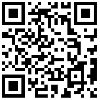In the realm of digital imaging, the 4:3 and 16:9 aspect ratios are two prevalent formats. While these may seem like mere numerical distinctions, they significantly impact image display and editing. Let's delve into the contrasts between these ratios, examining their benefits and drawbacks in various applications.
The 4:3 aspect ratio, with a composition of four units in width to three in height, is a conventional scale. The more modern 16:9 ratio offers a broader layout, spanning sixteen units wide by nine units high. Both are staples in digital imaging but offer distinct visual effects and uses.
Visually, 4:3 and 16:9 images present notable disparities. The expansive 16:9 ratio accommodates more horizontal content, providing a wider perspective ideal for movies, television shows, and gaming. In contrast, the 4:3 ratio emphasizes vertical elements, making it apt for showcasing text or intricate patterns.
In practical use, the preference for 4:3 and 16:9 varies. The traditional television screen adhered to the 4:3 ratio, and numerous classic films and shows were produced in this format. However, with the rise of HDTV, the 16:9 aspect ratio has been gaining prominence, as it aligns more closely with the human field of view, offering an enhanced visual experience.
Photographers also differ in their choice of ratios. Some favor the 4:3 for portraits and landscapes, appreciating its emphasis on subjects and balanced composition. Others lean towards the 16:9 for landscape photography, valuing the extensive view and rich detail it captures.
The upside of the 4:3 ratio lies in its compact design and focus on vertical details, serving text and intricate patterns well and echoing the style of vintage media. On the downside, it restricts the display of horizontal content, lacking the capacity to deliver an expansive visual encounter.
Conversely, the 16:9 ratio shines with its broad views and horizontal content presentation, becoming increasingly standard with HDTV's ascendancy. Yet, it falls short in exhibiting text or fine patterns crisply.
In conclusion, the 4:3 and 16:9 aspect ratios each bring unique strengths to the table, influencing how we perceive and engage with visual media. As technology advances and viewing preferences evolve, understanding these differences helps in selecting the right format for various imaging needs.



